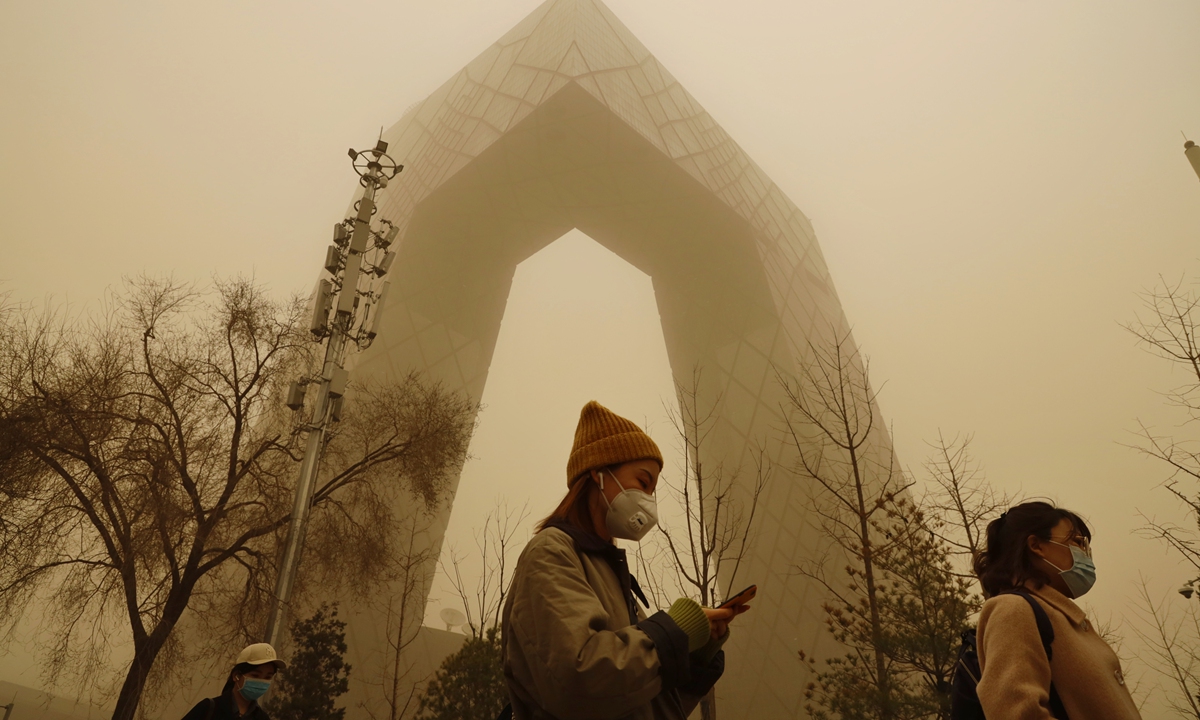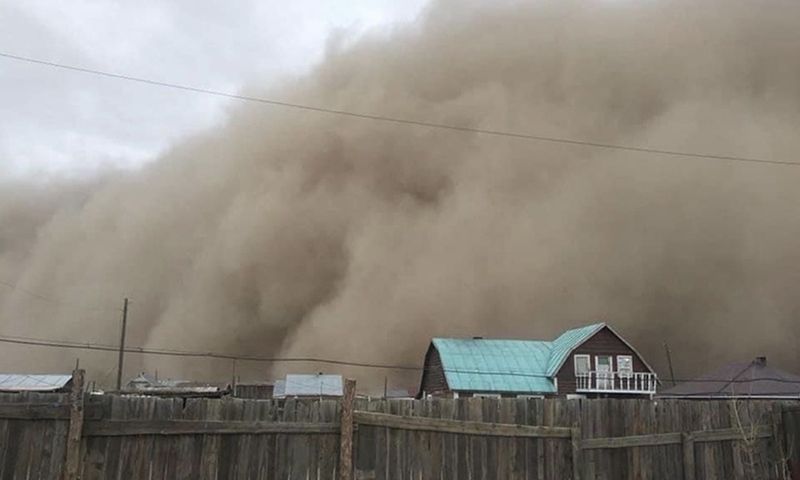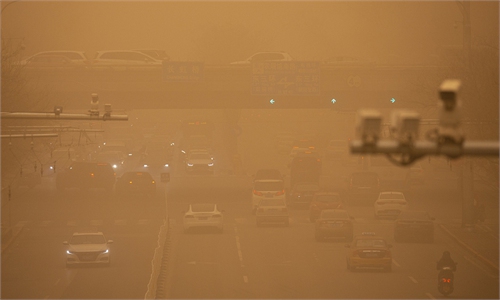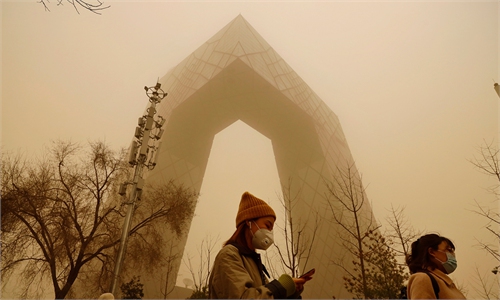Update: Beijing engulfed in largest sandstorm in decade; 10 dead and 1 missing in Mongolia

Photo: Li Hao/GT
Beijing was engulfed by the largest sandstorm in a decade on Monday morning, which originated in Mongolia, causing the visibility in most areas to be less than 1,000 meters and bringing the PM10 close to 10,000 micrograms per cubic meter in the city center.
Beijing issued a yellow warning for sandstorm at 7:25 am, the Beijing Meteorological Observatory said Monday, warning the public to take suitable precautions. With a yellow warning, the public are encouraged to suspend any outdoor activities and to wear protective masks.
The Central Meteorological Observatory called it the most intense sand-dust weather process in China in the past decade, and the range of sand-dust storm was also the widest in the past 10 years.
This wave of sandstorm is a result of the combined effects of cold air and cyclones from Mongolia. It gradually moved southward with the airflow and started to affect Beijing from north to south starting from 3 am, according to the Beijing Municipal Ecological and Environmental Monitoring Center.

Photo: Ministry of Environment and Tourism of Mongolia
On Monday, Mongolia's National Emergency Management Agency said that the strong sandstorms in the country have resulted in 10 deaths, and 590 reports of missing persons had been filed. As of press time, one person is still missing.
The wind speeds in various provinces of Mongolia have reached 20 meters per second and there have been gusts of up to 30 to 34 meters per second.
The PM10 in the core area of sand dust in Beijing is close to 10,000 micrograms per cubic meter, the monitoring center said.
The amount of PM10 in Beijing reached an average of more than 1,000 micrograms per cubic meter at 8 am on Monday, and the index topped 2,000 micrograms per cubic meter in some northern areas of the capital.
Wang Gengchen, a research fellow at the Institute of Atmospheric Physics of the Chinese Academy of Sciences, told the Global Times on Monday that it seems Beijing had not seen an intense sandstorm for years until this one, but actually sandstorm have never gone away.
The sandstorm situation has improved in the last few years as China has made efforts to curb the expansion of desertification and combat the upstream sand and dust from Northern China's Inner Mongolia and neighboring country Mongolia. However, it has proved to be a long battle due to the large areas of sand and dust it covers, Wang explained.
"The concentration of the sandstorm far exceeds the concentration of dust storms that the meteorological department can predict, indicating that we do not have enough knowledge of its nature," Zhao Yingmin, vice minister of the Ministry of Ecology and Environment, said in the opening speech to a series of lectures on ecological and environmental knowledge held by the Ministry of Ecology and Environment on Monday.
"Today's sandstorm is mainly due to natural factors, but it also shows that our ecological environment is still very fragile," he added.
In 1978, China launched the Three-North Shelterbelt Forest Program (TSFP). Consisting of forestation in northwest, north and northeast China, the eight-phase project, covering 13 provincial regions making up about 42.4 percent of the country's total land area, is expected to be completed by 2050.
Over the past 40-plus years, over 7.88 million hectares of windbreak trees have been planted, 336,000 square kilometers of desertified land has been managed, and more than 10 million hectares of desertified grassland has been protected and restored, according to the National Forestry and Grassland Administration.
The strong sand and dust are likely to continue during the day on Monday and see a downward trend late tonight.
A total of 12 areas including Northwest China's Xinjiang Uygur Region, North China's Inner Mongolia and Shanxi, Shaanxi-Gansu-Ningxia, Northeast China, Beijing-Tianjin-Hebei will experience sand and dust gradually on Monday.



